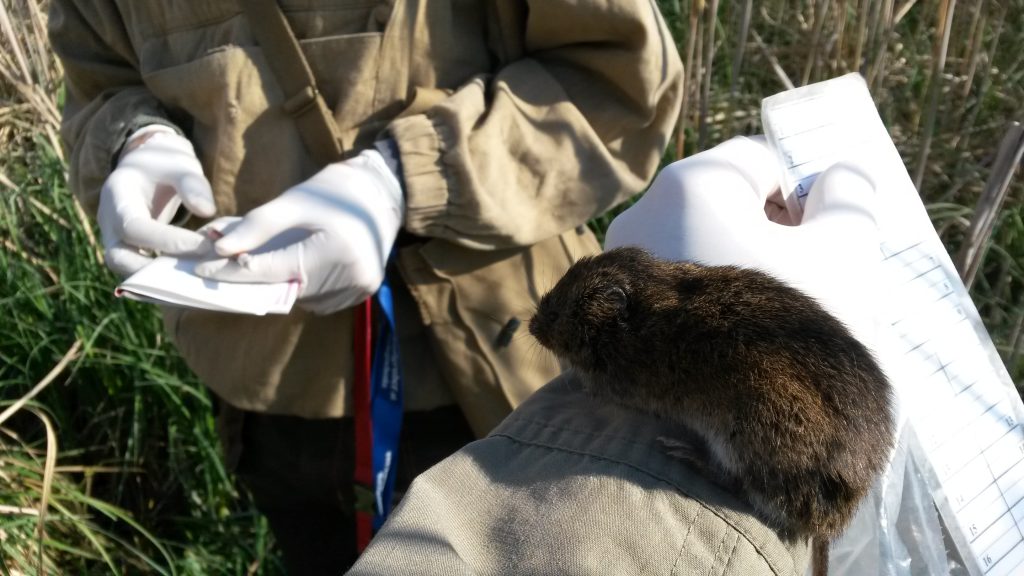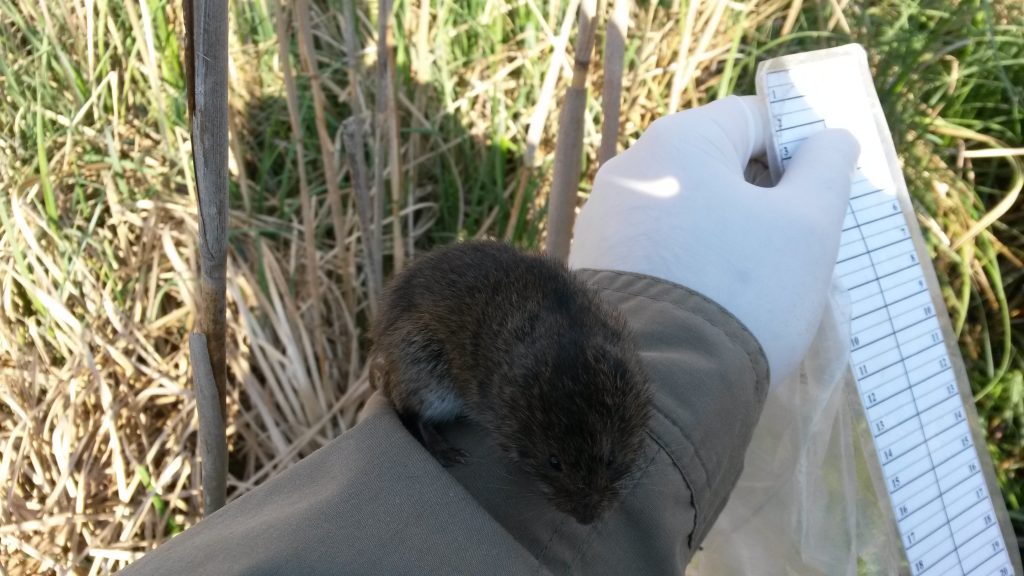The Teriologists* from the Faculty of Science, Comenius University in Bratislava have been engaged in root vole studies for more than ten years. The root vole has been researched in the field as well as the samples in the laboratory using molecular methods.
Field monitoring provides basic information on its occurrence. This research part is time consuming as well as physically demanding because of the terrain difficulties to access in reed stands. Special waterproof clothing is required as well as the face needs to be protected from intrusive insects. During the Microtus II Project, data on the exact root vole territory could be acquired using telemetry, which maps in details the movement route of this species around the country. To catch a root vole and attach a small transmitter on his body is a several-days action. Successful catching into a live trap is not guaranteed immediately, therefore, a dose of patience has to be included in the zoologist equipment. A biological sample is taken from each caught individual and stored in a proper medium. From each taken sample, DNA can be isolated. Then, application of molecular methods follows resulting in evaluation on conditions of the individual species populations. Our Teriologists are also interested, for example, to what extent the root vole populations on both Danube banks are interconnected and whether the river represents an impassable barrier for them.
These rare root voles inhabit just the last small islands of cold and moist sedge stands on the wetland sides and grounding abandoned river branches. Along with disappearance of these uncommon biotopes, existence of the root vole in our country is jeopardized. When we realize how essential the wetlands are, it is now time to decide for saving at least some of the sites.
* A science dealing with mammals (and thus with the Microtus) is called the Teriology.








